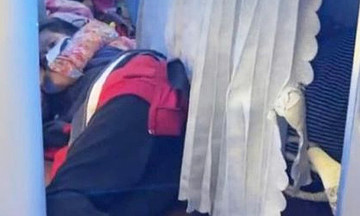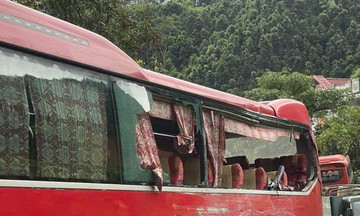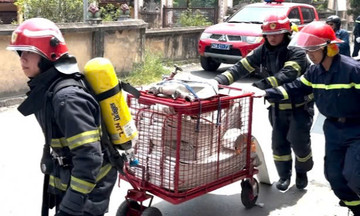Following Hanoi's liberation from Japanese forces during the August Revolution, President Ho Chi Minh and the Party's Central Committee journeyed on foot from the Tan Trao revolutionary base to Hanoi. Key members of the Central Committee found temporary residence at 48 Hang Ngang, the home of Trinh Van Bo and his wife, patriotic capitalists who fervently supported the revolution. The homeowners reserved the second floor for their guests, while the third floor became Ho Chi Minh's workspace. Disliking solitude, he chose to share the space with his colleagues.
The second-floor attic, typically a dining and reception area, lacked a proper writing desk. The typewriter rested on a small square table tucked into a corner. After work, each person found a place to rest: some on the sofa, others on a makeshift bed of joined chairs, while Ho Chi Minh lay on his canvas cot in the corner.
This attic became the meeting place for the Party's Central Standing Board. They discussed the urgent need to announce the Provisional Government and introduce it to the public – crucial steps to take before Chiang Kai-shek's forces arrived to disarm the Japanese. The Standing Board decided the day the Provisional Government was introduced would also mark Vietnam's official declaration of independence and the establishment of a democratic republic. Beyond government policies, an oath to the people was also necessary. The most critical task was drafting the Declaration of Independence.
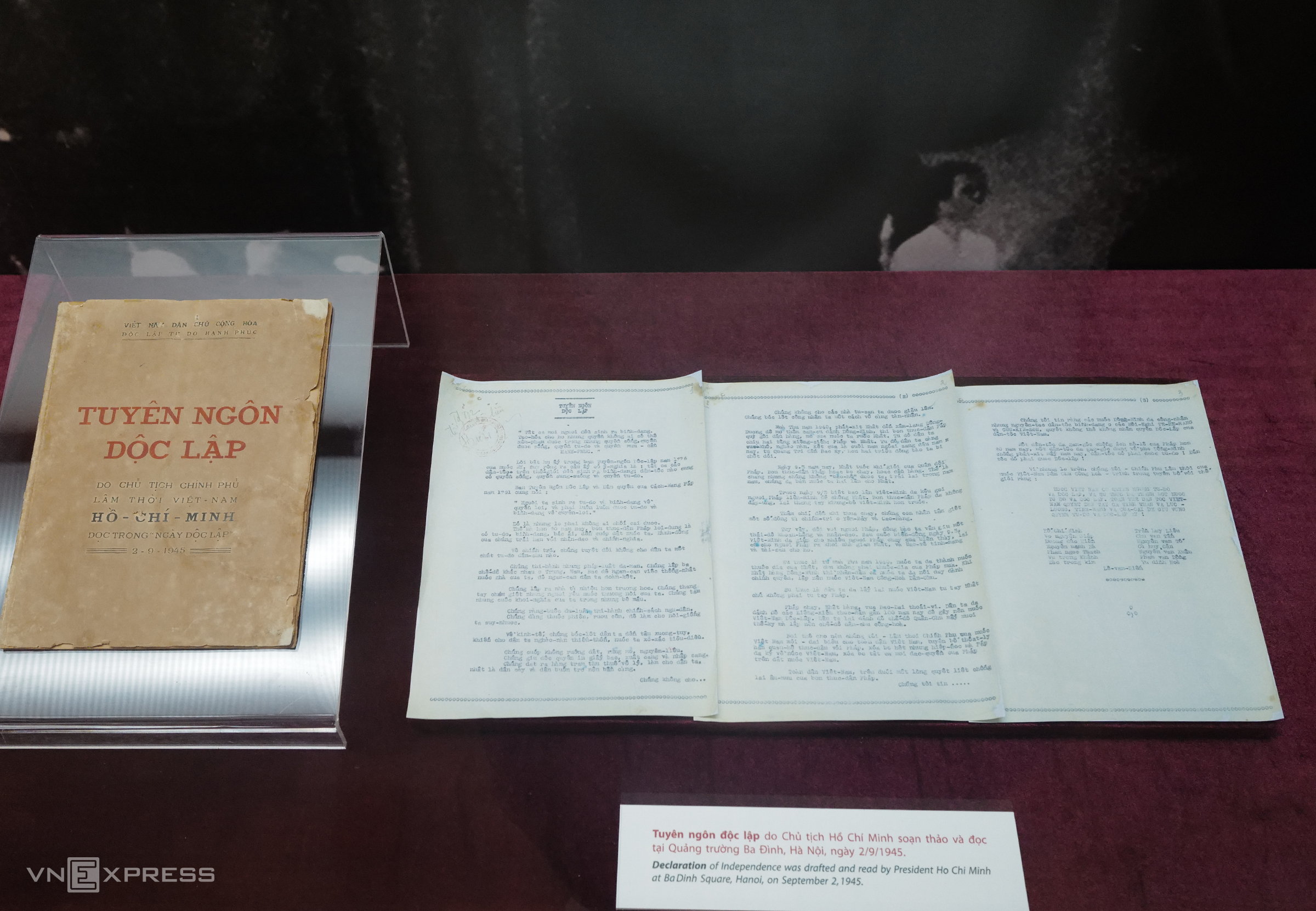 |
The Declaration of Independence, drafted and read by President Ho Chi Minh at Ba Dinh Square on 2/9/1945. Photo: Ngoc Thanh |
On 28/8/1945, in the dimly lit room, President Ho diligently worked on the document, typing and writing by hand. Apart from the homeowners, the house staff remained unaware of his identity, assuming he and his companions were "visitors from the countryside." Even the driver who picked up the group from Ga Village on the outskirts of Hanoi on 2/9 remained unaware he had transported the future president days earlier.
While President Ho focused on writing the declaration in Hanoi during the last days of August, he had already requested a copy of the US Declaration of Independence back in mid-May while still in Tan Trao, Tuyen Quang province. He made the request to Lieutenant John, a member of the US Office of Strategic Services (OSS), who relayed the message to Kunming, China, asking for the document to be airdropped.
At this time, to coordinate with the Allied forces, the Viet Minh welcomed a number of US personnel, primarily technicians to assist with radio communications, to the liberated zones to cooperate against Japan. In early August, at a designated airstrip in Lung Co Hamlet, Minh Thanh Commune, Tuyen Quang, a copy of the US Declaration of Independence was parachuted from a plane belonging to the 14th Air Force Group.
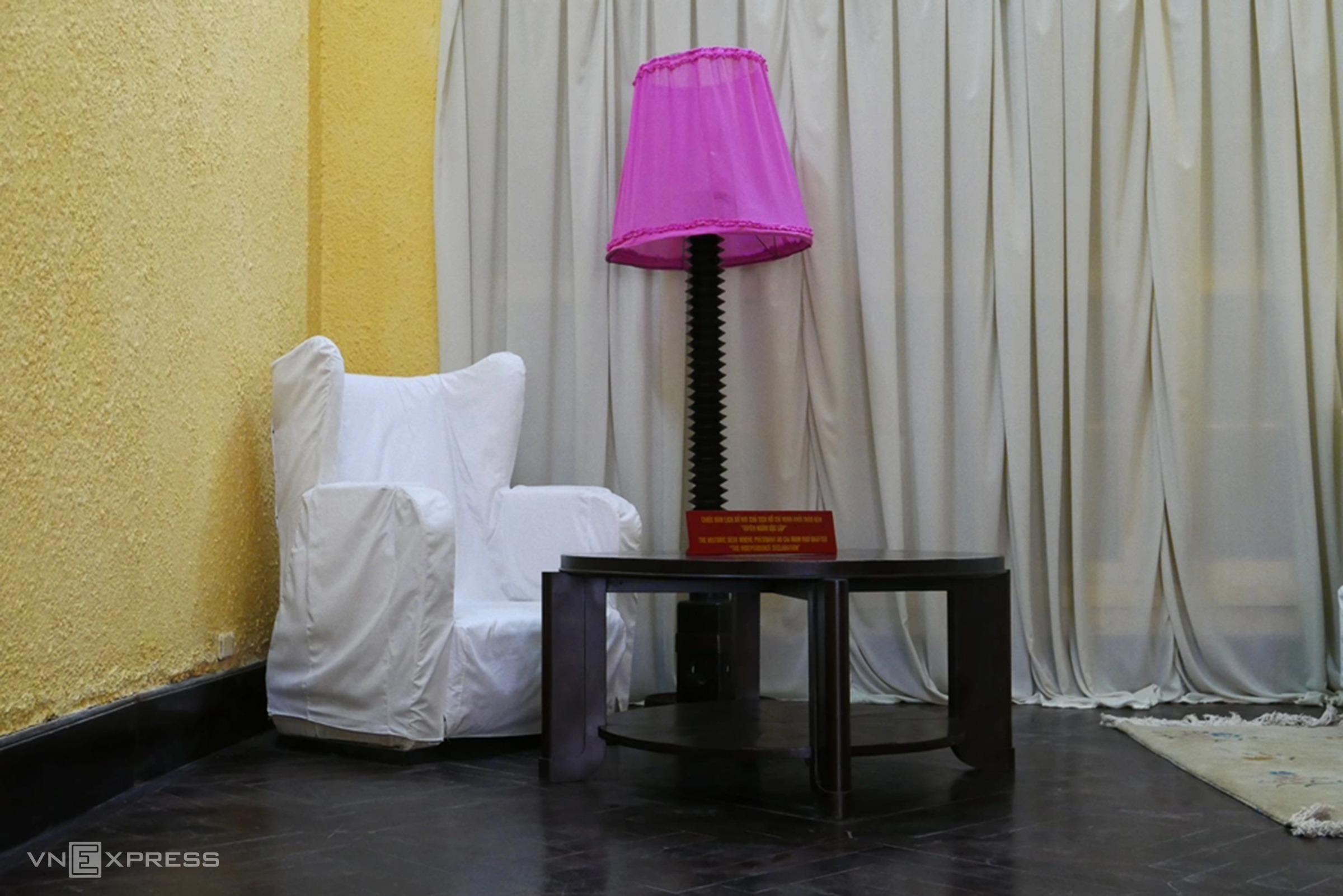 |
At the small desk on the second floor of 48 Hang Ngang, the Declaration of Independence that gave birth to the Democratic Republic of Vietnam was completed. Photo: Quy Doan |
At 10:30 AM on 29/8/1945, President Ho Chi Minh met with Major Archimedes L.A. Patti, head of the OSS Indochina desk, at 48 Hang Ngang. Patti was in Hanoi to oversee the rescue of prisoners of war and prepare for the disarming of Japanese troops north of the 16th parallel. The intelligence officer came at Ho Chi Minh's invitation, and Truong Chinh also attended the meeting.
In his book "Why Vietnam? Prelude to America's Longest War", Patti describes Ho Chi Minh that day as "vigorous and enthusiastic." They discussed upcoming plans, including the Independence Day ceremony scheduled for 2/9. One of Ho Chi Minh's reasons for meeting Patti, however, concerned the draft declaration he was preparing to announce in a few days.
The draft was presented, and Patti recognized it as a typewritten document in Vietnamese. Many words were crossed out, overwritten in ink with notes in the margins. As the interpreter read, the intelligence officer was "utterly astonished" to hear phrases from the 1776 US Declaration of Independence, though reordered and with some words substituted, giving them new meaning.
In the opening lines, the interpreter spoke of some "very familiar and strangely similar" words to the American Declaration. Upon hearing the next sentence, "These immortal words are in the American Declaration of Independence of 1776", Patti stopped the interpreter. He turned to Ho Chi Minh, surprised, and asked if he "really intended to use that sentence" in Vietnam's declaration.
President Ho Chi Minh leaned back in his chair, hands clasped, as if in thought. Then, with a gentle smile, he asked the American major, "Can I not use that sentence?"
Patti regained his composure and asked the interpreter to reread the passage: "All men are created equal. They are endowed by their Creator with certain unalienable Rights, among these are Life, Liberty and the pursuit of Happiness." Patti, trying to recall the original, realized the nouns had been rearranged; the order of liberty and life had been switched.
"Exactly! There can be no liberty without life, just as there can be no happiness without liberty," President Ho Chi Minh replied.
Ho Chi Minh invited Patti to the Independence Day ceremony on 2/9, marking the birth of the Democratic Republic of Vietnam. Patti accepted but indicated he might not be able to attend due to sensitive circumstances. The American intelligence officer became the first foreigner to hear the draft of the Vietnamese Declaration of Independence.
On the morning of 30/8/1945, President Ho Chi Minh and Truong Chinh invited Vo Nguyen Giap and several others to discuss and provide feedback on the draft declaration. After finalizing the document, Ho Chi Minh read it aloud for the group's approval.
General Giap later reminisced about that morning, recalling the "radiant joy on [Ho Chi Minh's] still-thin face," describing it as one of his "most exhilarating moments." 26 years earlier, at the Versailles Peace Conference, Nguyen Ai Quoc (Ho Chi Minh’s alias) had presented the urgent needs for democracy and civil rights for colonial peoples, but even these minimal requests were rejected. The young man realized he couldn't rely on capitalists but had to depend on his own people. This moment represented the culmination of 80 years of struggle.
On 31/8/1945, President Ho Chi Minh made final additions to the declaration and inquired about the preparations for the 2/9/1945 rally at Ba Dinh Square in Hanoi. He reviewed the site plans and reminded the organizers of several points, including sanitation facilities for the attendees, and advised an early conclusion if it rained to prevent people, especially the elderly and children, from getting wet.
 |
The platform for the reading of the Declaration of Independence on 2/9/1945. Archival photo |
Amidst the busy final days of August, with Independence Day set for 2/9/1945, the officials realized they needed presentable attire for their public appearance, especially for President Ho Chi Minh. Having returned from the revolutionary base, everyone, including Ho Chi Minh, wore worn-out, patched clothing.
As merchants, Trinh Van Bo and Hoang Thi Minh Ho had ample fabric in stock. Mrs. Minh Ho selected some khaki for new outfits for the officials and provided several new sets of clothes for them to wear temporarily. Everyone took what fit. However, Ho Chi Minh, weakened by recent illness and the journey from the revolutionary base, had lost weight and none of the ready-made clothes fit him.
Close to the big day, Mr. and Mrs. Trinh Van Bo brought a selection of fabrics, but Ho Chi Minh insisted on simple attire, declining expensive wool or a tie. Finally, the renowned tailor Phu Thinh of Hanoi made two custom suits for him: a four-pocket jacket, buttoned up for formal occasions and open for comfort, suitable for both shoes and sandals. Ho Chi Minh tried them on and was pleased.
On 2/9/1945, at Ba Dinh Square, before 500,000 people, President Ho Chi Minh began the Declaration of Independence of the Democratic Republic of Vietnam: "All men are created equal. They are endowed by their Creator with certain unalienable Rights, that among these are Life, Liberty and the pursuit of Happiness…".
General Vo Nguyen Giap, in his memoirs "Unforgettable Years", vividly recalled "the frail old man that day, with a high forehead, bright eyes, wearing an old hat." The khaki suit, which Ho Chi Minh continued to wear for 24 years as president during national holidays and state visits, bore "not a single medal on his chest, just as on the day he first appeared before his people."
Hong Chieu
Source excerpts:|
- General Vo Nguyen Giap - Unforgettable Years, in the Collected Memoirs, People's Army Publishing House 2018
- Ho Chi Minh Writing the Declaration of Independence, Culture and Information Publishing House, archived at the National Library of Vietnam.








